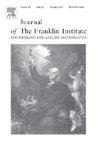Class incremental learning with analytic learning for hyperspectral image classification
IF 3.7
3区 计算机科学
Q2 AUTOMATION & CONTROL SYSTEMS
Journal of The Franklin Institute-engineering and Applied Mathematics
Pub Date : 2024-09-19
DOI:10.1016/j.jfranklin.2024.107285
引用次数: 0
Abstract
Hyperspectral image classification (HSIC) is crucial for applications in agriculture and environmental monitoring. As ground objects evolve and remote sensing technology progresses, there is a growing need for HSIC models that can adapt to new data classes without requiring to be retrained from scratch. Throughout the continual learning procedure, the model is expected to not only effectively extract spatial–spectral features from the hyperspectral image but also alleviate the issue of catastrophic forgetting, i.e., the model forgets the learned classes’ knowledge when accessing novel classes during the training process. In this paper, for the HSIC task, we propose a class incremental learning method (HSI-CIL) that is based on analytic learning, a technique that converts network training into linear problems. Specifically, The HSI-CIL model consists of a lightweight feature extractor, a Feature Processing Module (FPM) and an Analytic Linear Classifier (ALC). This model does not need data storage for old and new classes and has only one epoch in the incremental learning stage, so it has lower consumption of resources and training time than several attempts have been proposed for addressing catastrophic forgetting. We perform abundant experiments with the proposed HSI-CIL on three publicly available hyperspectral datasets including Indian Pines, Pavia University, and Salinas. The experiments demonstrate that our HSI-CIL exceeds the state-of-the-art class incremental learning (CIL) techniques applied in HSIC with a certain gap.
高光谱图像分类的类增量学习与分析学习
高光谱图像分类(HSIC)对于农业和环境监测领域的应用至关重要。随着地面物体的发展和遥感技术的进步,越来越需要能够适应新数据类别而无需从头开始重新训练的 HSIC 模型。在整个持续学习过程中,模型不仅要能有效地从高光谱图像中提取空间光谱特征,还要能缓解灾难性遗忘的问题,即在训练过程中,模型在访问新的类别时会遗忘已学过的类别知识。本文针对 HSIC 任务,提出了一种基于解析学习的类增量学习方法(HSI-CIL),解析学习是一种将网络训练转换为线性问题的技术。具体来说,HSI-CIL 模型由一个轻量级特征提取器、一个特征处理模块(FPM)和一个分析线性分类器(ALC)组成。该模型不需要存储新旧类别的数据,在增量学习阶段只有一个历元,因此与其他几种解决灾难性遗忘的尝试相比,该模型消耗的资源和训练时间更少。我们在三个公开的高光谱数据集(包括印第安松树、帕维亚大学和萨利纳斯)上对所提出的 HSI-CIL 进行了大量实验。实验证明,我们的 HSI-CIL 超越了 HSIC 中应用的最先进的类增量学习(CIL)技术,并存在一定差距。
本文章由计算机程序翻译,如有差异,请以英文原文为准。
求助全文
约1分钟内获得全文
求助全文
来源期刊
CiteScore
7.30
自引率
14.60%
发文量
586
审稿时长
6.9 months
期刊介绍:
The Journal of The Franklin Institute has an established reputation for publishing high-quality papers in the field of engineering and applied mathematics. Its current focus is on control systems, complex networks and dynamic systems, signal processing and communications and their applications. All submitted papers are peer-reviewed. The Journal will publish original research papers and research review papers of substance. Papers and special focus issues are judged upon possible lasting value, which has been and continues to be the strength of the Journal of The Franklin Institute.

 求助内容:
求助内容: 应助结果提醒方式:
应助结果提醒方式:


